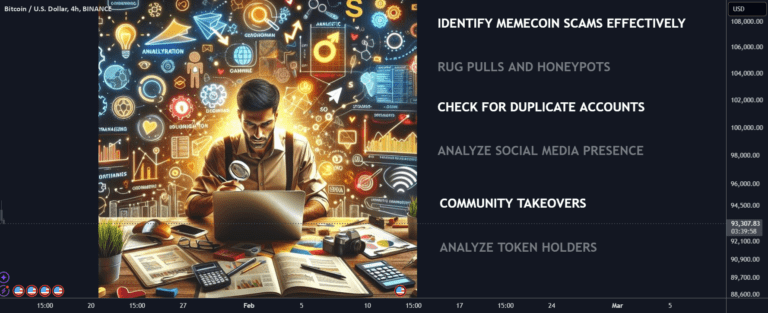🔸Cryptocurrency scams are commonplace, particularly targeting traders unfamiliar with the red flags. Knowing about these scams can save you from losing your hard-earned money in the meme coin market.
🔸Airdrop scams are common, where scammers send fake tokens to wallets. Interacting with these tokens can result in a complete leak of your wallet.
🔸Avoiding certain wallets for meme coin trading is crucial. Fantom, while popular, can expose traders to more risk compared to faster and more secure alternatives.
🔸Identifying scams in the cryptocurrency market requires vigilance on token activity and chart patterns. Recognizing indicators such as rug pulls and honeypots can protect investors from losses.
🔸Rug pulls often manifest as sudden price spikes without sales activity, indicating potential manipulation by developers. This trend serves as a wake-up call for investors.
🔸Honeypots are tokens that allow you to buy but prevent you from selling, thus trapping investors. Understanding this concept is crucial to avoiding scams.
🔸Checking the legitimacy of a token involves checking for duplicate tokens and ensuring liquidity is locked in. These steps help ensure investment security.
🔸Analyzing social media presence is crucial in determining the trustworthiness of a developer. Active communication and transparency on platforms like Twitter can indicate a legitimate project.
🔸Using bots to check Twitter account history can expose recycled profiles often associated with scams. This method improves the security of crypto investment choices.
🔸Community buyouts often occur after a developer dies, allowing the community to regain control and potentially revitalize the project. This can lead to more decentralized management.
🔸Verifying the authenticity of a project website is crucial. Scammers can create fake sites. Using domain age checkers therefore helps ensure the legitimacy of the information.
🔸Understanding token holder dynamics is crucial in the crypto market. Analyzing sniper behavior can reveal potential risks associated with token investments.
🔸Analyzing token holders and their activities can help identify potential red flags. Tools such as the Trench Radar Scanner help monitor group activities and assess risks.
🔸Visualizing grouped data can improve decision-making around token investments. Understanding the distribution of holdings across wallets helps assess the stability of a token.

